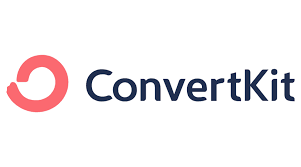In the ever-evolving digital world, landing pages have become the cornerstone of successful online marketing strategies. They are the pitch deck of the internet, the first impression that needs to nail it every time. Among the plethora of tools available, Mailchimp and ConvertKit stand out as frontrunners in the landing page creation race. But which one is the best fit for your needs? Let’s dive deep, compare their features, and help you decide.
| Mailchimp Landing Pages | ConvertKit Landing Pages |
|---|---|
 |  |
| G2 Score – 4.4 out of 5 stars | G2 Score – 4.4 out of 5 stars |
| TrustRadius Score – 7.9/10 | TrustRadius Score – 8.8/10 |
The Essence of Landing Pages in Digital Marketing
Before we pit Mailchimp against ConvertKit, let’s understand why landing pages are non-negotiable in your digital marketing arsenal. Simply put, a landing page is where a visitor “lands” after clicking on a link in an email, ads from Google, Bing, YouTube, or similar places on the web. Its primary goal is to convert visitors into leads or customers, making it a critical component of your marketing funnel.
Ease of Use: The First Hurdle
When it comes to choosing the right tool for creating landing pages, ease of use is often the first consideration. After all, not everyone is a tech wizard, and even those who are would prefer to spend their time on strategy rather than troubleshooting complex software. Let’s see how Mailchimp and ConvertKit stack up in this department.
Mailchimp: The Friendly Giant
Mailchimp has long been the go-to for email marketing, but its landing page capabilities are equally impressive. Known for its user-friendly interface, Mailchimp makes it incredibly easy to design landing pages, even for those with no prior experience in web design. With a drag-and-drop editor, users can quickly select elements such as text boxes, images, buttons, and more, then place them exactly where they want on the page.
The platform offers a wide range of customizable templates that cater to various industries and marketing campaigns, from product launches to webinar sign-ups. These templates are not just aesthetically pleasing but are also designed to be responsive, ensuring your landing page looks great on any device.
Mailchimp also excels in its preview and testing features, allowing you to see how your page will look on different devices before you publish it. Plus, you can run A/B tests to experiment with different elements and see what works best with your audience.
ConvertKit: The Simplistic Powerhouse
On the flip side, ConvertKit approaches landing page creation with a minimalist mindset. It may not offer the same level of design flexibility as Mailchimp, but it makes up for it with its straightforward, no-frills approach. ConvertKit is designed with creators in mind, focusing on functionality over flashy designs.
The platform offers a selection of templates that, while fewer in number, are highly effective. They’re easy to customize and can fit a variety of content types and marketing objectives. ConvertKit’s editor is intuitive, making it easy to add content, change layouts, and customize design elements without needing a deep dive into the manual.
ConvertKit shines with its seamless integration with email marketing functions. It allows users to easily capture leads from landing pages and funnel them directly into email campaigns. This tight integration makes it a potent tool for creators and marketers focused on building and engaging their audience over time.
The Verdict on Ease of Use
When it comes down to ease of use, it’s a matter of preference and priorities. If you value design flexibility and a wide range of templates, Mailchimp is your go-to. Its user-friendly interface and robust testing capabilities make it a powerful tool for creating visually appealing and effective landing pages. Conversely, if you prioritize simplicity and seamless integration with email marketing, ConvertKit’s straightforward approach will serve you well. Its simplicity does not come at the expense of effectiveness, making it an excellent choice for those who want to get their landing pages up and running with minimal fuss.
Integration and Automation: Crafting a Cohesive Marketing Ecosystem
In today’s digital marketing landscape, the ability of your tools to “talk” to each other can significantly streamline your workflows and enhance your campaign’s effectiveness. Both Mailchimp and ConvertKit offer integration capabilities, but how they execute this feature can make a big difference depending on your needs. Let’s explore how each platform handles integration and automation, two key ingredients in crafting a cohesive marketing ecosystem.
Mailchimp: The Connector
Mailchimp’s strength lies in its vast integration ecosystem. Being one of the oldest players in the email marketing field, it has had ample time to establish connections with a wide range of services and platforms. From CRM systems like Salesforce to social media platforms such as Facebook and Instagram, Mailchimp ensures you can connect your landing pages to almost any tool your business uses. This extensive integration network is crucial for businesses that rely on a diverse set of tools for their marketing efforts.
Beyond simple integrations, Mailchimp offers robust automation capabilities. Its automation features go beyond email, allowing you to automate tasks like updating customer records in your CRM when someone signs up through a landing page or sending targeted emails based on user behavior. This level of automation can significantly reduce manual work, ensuring that your marketing funnel operates smoothly and efficiently.
ConvertKit: The Streamlined Automator
While ConvertKit might not boast as extensive an integration ecosystem as Mailchimp, it focuses on providing seamless automation within its platform, particularly for creators and online entrepreneurs. ConvertKit makes it easy to set up automated email sequences that trigger when someone signs up through a landing page. This feature is incredibly user-friendly, designed to help non-tech-savvy users create powerful, automated marketing campaigns with ease.
ConvertKit’s integrations, though not as numerous, are carefully selected and highly relevant to its target audience. Integration with platforms like Shopify, WooCommerce, and WordPress makes it a compelling choice for content creators, bloggers, and e-commerce businesses. The platform’s focus on ease of use extends to its integration and automation features, making it simple to connect with essential services and automate key marketing tasks.
The Verdict on Integration and Automation
The choice between Mailchimp and ConvertKit in terms of integration and automation depends on the breadth of tools you use and the complexity of your marketing campaigns. Mailchimp is the clear winner if you need a platform that integrates with a wide array of services and offers advanced automation capabilities beyond email. Its ability to connect with numerous third-party apps and platforms can significantly enhance your marketing ecosystem’s efficiency and effectiveness.
On the other hand, if your needs are more streamlined and you value simplicity and ease of use, ConvertKit might be the better choice. Its automation features are robust yet accessible, making it ideal for those who want to set up effective automated campaigns without getting bogged down in complexity. ConvertKit’s focused approach to integration ensures that you have access to the key tools your business needs without overwhelming you with options. Both platforms offer compelling features in terms of integration and automation, but your specific needs and preferences will ultimately determine the best fit for your marketing strategy.
Analytics and Reporting: Measuring Success in Numbers
In the digital marketing realm, data is king. The ability to track the performance of your landing pages and understand user behavior is pivotal for refining strategies and achieving better outcomes. Both Mailchimp and ConvertKit offer analytics and reporting capabilities, but they cater to different user needs and preferences in how they present and utilize data. Let’s break down what each platform offers in terms of analytics and how they can help you measure your success.
Mailchimp: The Data-Driven Optimizer
Mailchimp’s analytics capabilities are comprehensive, offering users a deep dive into the performance of their landing pages. It provides a wide array of metrics, including page views, clicks, conversions, and the conversion rate, allowing marketers to gauge the effectiveness of their landing pages accurately. Furthermore, Mailchimp integrates these analytics with its broader suite of tools, giving users a holistic view of how their landing pages contribute to their overall marketing goals.
One of Mailchimp’s standout features in analytics is its comparative reporting. This allows users to compare the performance of different landing pages side by side, making it easier to identify what works best. Additionally, Mailchimp offers insights into the behavior of website visitors, such as how long they stay on a page and what content captures their attention. This level of detail is invaluable for optimizing landing pages and tailoring content to meet the audience’s interests.
ConvertKit: The Creator’s Companion
ConvertKit approaches analytics with a creator-focused lens, prioritizing simplicity and clarity. Its reporting features are designed to give content creators and entrepreneurs a straightforward overview of their landing page performance without overwhelming them with too much data. ConvertKit provides key metrics such as subscriber growth, conversion rates, and email open rates, presenting them in an easy-to-understand format.
While ConvertKit’s analytics may not be as detailed as Mailchimp’s, they offer sufficient insights for creators who need to monitor their growth and engagement levels. The platform also excels in tracking the effectiveness of email campaigns linked to landing pages, allowing users to see how their emails contribute to conversions. This integration between landing page and email performance is particularly useful for users who rely heavily on email marketing as part of their strategy.
The Verdict on Analytics and Reporting
The choice between Mailchimp and ConvertKit in terms of analytics boils down to the level of detail you need and how you plan to use that data. If you’re a marketer or a business that thrives on data-driven decisions and requires in-depth analysis to optimize your landing pages continually, Mailchimp’s comprehensive analytics suite is the way to go. Its ability to provide granular insights and comparative data can significantly enhance your ability to fine-tune your strategies and improve outcomes.
Conversely, if you’re a content creator or entrepreneur who prefers a streamlined approach to analytics, ConvertKit offers a more accessible and less intimidating way to understand your landing page performance. Its focus on key metrics and clear reporting makes it ideal for those who want to keep a pulse on their growth and engagement without diving into complex data analysis.
Ultimately, the best platform for analytics and reporting depends on your specific needs, the complexity of your campaigns, and how you prefer to interact with data to inform your marketing decisions.

Related: Check out our free SEO suite

Pricing and Value for Money: Balancing Cost and Features
For many businesses, especially small startups and individual creators, the cost of tools and services can be a decisive factor. Both Mailchimp and ConvertKit offer various pricing tiers to accommodate different needs and budgets, but understanding the balance between cost and features is crucial. Let’s delve into the pricing structures of both platforms and evaluate their value for money.
| Mailchimp Landing Pages | Mailchimp offers free landing page creation within its Free plan, which includes basic features suitable for small businesses or individuals starting out. For advanced features like A/B testing, custom branding, and more, users need to upgrade to paid plans starting at $11 per month (Essentials plan) as of my last update. |
| ConvertKit Landing Pages | ConvertKit allows users to create landing pages for free, aiming at helping creators grow their audience without initial investment. For more advanced automation, integration, and support features, their pricing starts at $9 per month for the Creator plan when billed annually. |
Mailchimp: Flexible Plans for Growing Businesses
Mailchimp’s pricing strategy is designed to scale with your business. It offers a free tier, which is great for beginners and small businesses just starting out with their online marketing efforts. The free plan includes basic email marketing features and allows users to create landing pages, making it a solid option for those looking to dip their toes in without financial commitment.
As your needs grow, Mailchimp offers several paid plans that incrementally unlock more features, such as advanced segmentation, A/B testing, and increased automation capabilities. The pricing for these plans is based on the number of contacts in your database, which means the cost can increase significantly as your list grows. While this model supports scalability, it’s important for businesses to monitor their subscriber count and evaluate the cost-benefit as they move up the tiers.
Mailchimp’s higher-tier plans offer comprehensive marketing features, making it a potent tool for businesses with diverse marketing needs beyond landing pages. However, the cost can be a consideration for small businesses or those with a tight budget.
ConvertKit: Creator-Focused Pricing
ConvertKit also offers a free plan aimed at beginners and creators just starting to build their audience. This plan includes access to landing pages and basic email marketing features, similar to Mailchimp. However, ConvertKit places a stronger emphasis on supporting creators with a manageable number of subscribers, offering more generous limits on its free tier compared to Mailchimp.
The paid plans of ConvertKit are straightforward, with prices based primarily on the number of subscribers. ConvertKit prides itself on offering all its features across paid plans, meaning you get access to all its capabilities once you move beyond the free tier. This includes advanced automations, direct integrations, and premium support. The cost, while competitive, reflects the value of a platform tailored to the needs of online creators, bloggers, and small businesses.
The Verdict on Pricing and Value for Money
Choosing between Mailchimp and ConvertKit from a pricing perspective depends on your specific needs, the size of your audience, and the complexity of your marketing strategies. Mailchimp’s tiered pricing model offers flexibility and a breadth of features that can accommodate businesses at different stages of growth. However, for those whose primary concern is email marketing and landing pages, the costs can add up as your subscriber list grows.
ConvertKit, with its creator-centric approach, offers a simpler pricing structure and ensures that all features are available once you move to a paid plan. This can represent better value for money for creators and small businesses focused on building and engaging with their audience through email marketing and landing pages, without the need for the more advanced features Mailchimp offers.
In conclusion, both platforms offer compelling options, but the best choice for you will depend on your growth stage, audience size, and the specific features you need to effectively engage with your audience and meet your marketing objectives.
Customization and Branding: Making Your Landing Page Shine
In the competitive landscape of digital marketing, the ability to customize and brand your landing pages is not just a nice-to-have; it’s essential. A landing page that resonates with your brand’s identity and message can significantly increase conversion rates and enhance your overall marketing strategy. Both Mailchimp and ConvertKit offer customization features for landing pages, but they cater to these needs in different ways. Let’s dive into how each platform allows you to personalize your landing pages to align with your brand.
Mailchimp: The Designer’s Canvas
Mailchimp shines when it comes to customization and branding possibilities. With its intuitive drag-and-drop editor, users have the freedom to design landing pages that truly reflect their brand. The platform offers a wide variety of templates as a starting point, each of which can be extensively customized. You can adjust colors, fonts, images, and even the layout to match your brand guidelines closely.
Furthermore, Mailchimp allows for the incorporation of custom CSS and HTML, providing an even higher level of customization for those with web design skills. This feature is particularly useful for businesses that want to create unique landing pages that stand out from the crowd. The ability to finely tune every aspect of the design ensures that your landing page not only captures attention but also provides a cohesive brand experience.
ConvertKit: Simplicity Meets Elegance
ConvertKit takes a more streamlined approach to customization, focusing on simplicity and effectiveness. While it might not offer the same level of design flexibility as Mailchimp, ConvertKit provides a selection of clean, modern templates that are easily customizable to fit your brand’s look and feel. The platform allows for basic customizations, such as changing colors, fonts, and images, ensuring that your landing pages are aligned with your brand identity.
For users who prioritize content over complex design, ConvertKit’s approach offers a perfect balance. The platform’s focus on simplicity means that creating a branded landing page doesn’t require extensive design skills. This makes ConvertKit an excellent option for creators, bloggers, and small businesses looking for an efficient way to create visually appealing landing pages without the hassle of intricate design processes.
The Verdict on Customization and Branding
The decision between Mailchimp and ConvertKit for customization and branding largely depends on your specific needs and the level of design control you want over your landing pages. If having the ability to meticulously craft every element of your landing page to reflect your brand’s unique identity is important to you, Mailchimp’s robust design capabilities and the flexibility of its editor make it the superior choice. Its platform is particularly suited to users who value creativity and have a keen eye for design details.
Conversely, if you prefer a more straightforward, no-fuss approach to landing page creation without sacrificing the ability to customize essential branding elements, ConvertKit offers a practical solution. Its user-friendly interface and elegantly designed templates provide a solid foundation for creating beautiful landing pages that can be tailored to your brand, minus the complexity.
Ultimately, both platforms acknowledge the importance of branding in digital marketing and offer viable paths to achieving a branded landing experience. Your preference for design complexity versus simplicity will guide your choice, ensuring that your landing pages not only capture leads but also embody your brand’s essence.
Email Marketing Integration: Enhancing Your Landing Page’s Impact
The integration of email marketing with landing pages is a critical aspect of a cohesive digital marketing strategy. Effective use of both can significantly amplify your marketing efforts, improving lead generation, nurturing, and conversions. Mailchimp and ConvertKit both offer email marketing services, but the way they integrate these with landing pages varies. Let’s explore how each platform leverages email marketing to complement and enhance the effectiveness of landing pages.
Mailchimp: The Seamless Integrator
Given its origins and strength as an email marketing platform, Mailchimp offers a seamless integration between its landing pages and email marketing services. This integration is intuitive and deeply ingrained in the platform, allowing users to easily capture leads through landing pages and funnel them directly into specific email marketing campaigns or automations.
Mailchimp’s robust automation features enable users to set up sophisticated email sequences triggered by actions taken on landing pages, such as signing up for a newsletter or downloading a resource. This capability is essential for nurturing leads through personalized, relevant content that moves them along the buyer’s journey.
Moreover, Mailchimp provides detailed analytics on both landing pages and email campaigns, offering insights into how they perform individually and together. This comprehensive view allows marketers to fine-tune their strategies for better alignment and effectiveness across their marketing channels.
ConvertKit: The Creator’s Choice for Cohesion
ConvertKit, while newer to the scene than Mailchimp, has quickly become a favorite among content creators for its simplicity and effectiveness, particularly in how it integrates email marketing with landing pages. ConvertKit was designed with the creator in mind, offering straightforward tools to capture leads and immediately engage them with content that matters.
The platform makes it easy to connect landing pages to email campaigns or automations, ensuring that new subscribers receive timely, relevant content right from the start. ConvertKit’s focus on simplicity extends to its automation features, which are intuitive yet powerful, allowing creators to set up email sequences that feel personal and are highly effective in engaging their audience.
ConvertKit also emphasizes the importance of content, providing tools that make it simple to embed sign-up forms or calls-to-action within email content, blog posts, and more. This holistic approach ensures that every piece of content, whether on a landing page or in an email, works together to build relationships and drive conversions.
The Verdict on Email Marketing Integration
When it comes to integrating email marketing with landing pages, both Mailchimp and ConvertKit offer compelling solutions, but they cater to slightly different audiences.
Mailchimp’s strength lies in its comprehensive feature set, offering a wide range of tools and options for businesses that require depth and flexibility in their marketing strategies. Its seamless integration between landing pages and email marketing, coupled with advanced automation capabilities, makes it ideal for businesses looking to implement sophisticated marketing funnels.
ConvertKit, on the other hand, offers a more streamlined and intuitive approach, making it the perfect choice for creators, bloggers, and small businesses focused on building and engaging their audience. Its simplicity does not sacrifice power, providing all the necessary tools to create effective, cohesive campaigns that resonate with their audience.
Ultimately, the choice between Mailchimp and ConvertKit for email marketing integration with landing pages depends on your specific needs, the complexity of your marketing strategies, and the audience you aim to engage. Both platforms provide the tools and features necessary to create a seamless, effective bridge between your landing pages and email marketing efforts.
Conclusion
Choosing between Mailchimp and ConvertKit for your landing page and email marketing needs boils down to understanding your priorities, the scale of your operations, and the audience you aim to engage. Mailchimp shines with its extensive customization options, robust integration capabilities, and comprehensive analytics, making it ideal for businesses seeking depth and flexibility. ConvertKit, with its streamlined approach, excels in providing simplicity and effectiveness, particularly appealing to creators, bloggers, and small businesses focused on building meaningful connections with their audience.
Both platforms offer powerful tools for creating engaging landing pages and integrating them with email marketing strategies to nurture leads and drive conversions. Your choice should align with your marketing goals, the complexity of your campaigns, and the level of detail you require in analytics and reporting. Whether you lean towards the versatile, feature-rich environment of Mailchimp or the focused, user-friendly approach of ConvertKit, ensuring your landing pages and email marketing efforts work in harmony is key to digital marketing success.
Read Next:
- How ESG Flo Can Boost their Website Traffic to 100k in 6 Months! (Our Take!)
- How minds.ai Can Boost their Website Traffic to 100k in 6 Months! (Our Take!)
- How Anonybit Can Boost their Website Traffic to 100k in 6 Months! (Our Take!)
- How Zordi Can Boost their Website Traffic to 100k in 6 Months! (Our Take!)
- 31+ Top Social Media Management tools Compared! (2023)




















